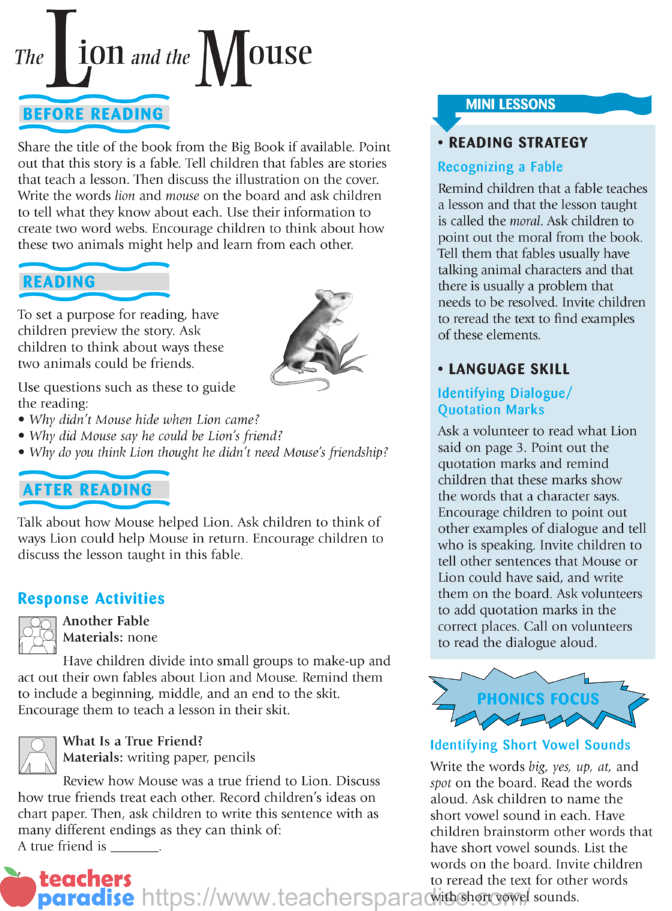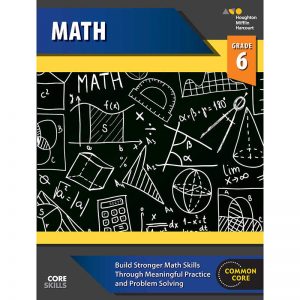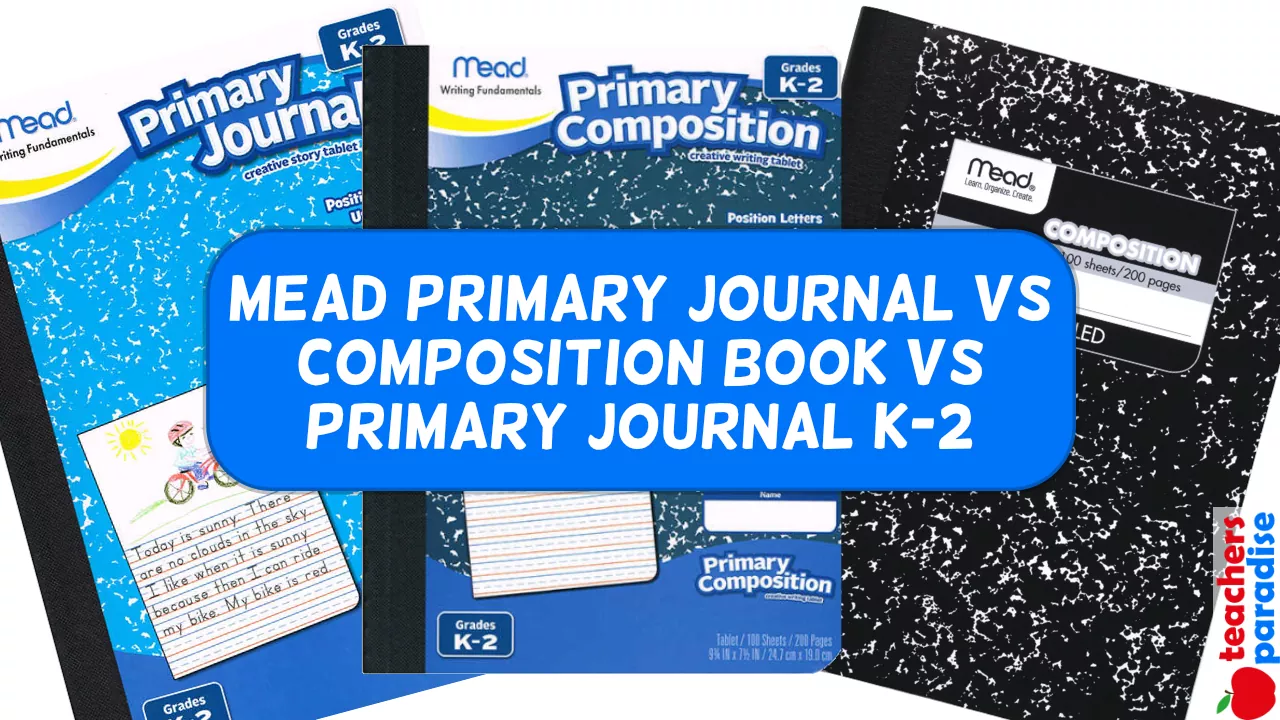The Lion and the Mouse Emergent Reader Activity
BEFORE READING
Share the title of the book from the Big Book if available. Point out that this story is a fable. Tell children that fables are stories that teach a lesson. Then discuss the illustration on the cover. Write the words lion and mouse on the board and ask children to tell what they know about each. Use their information to create two word webs. Encourage children to think about how these two animals might help and learn from each other.
READING
To set a purpose for reading, have children preview the story. Ask children to think about ways these two animals could be friends. Use questions such as these to guide the reading:
• Why didn’t Mouse hide when Lion came?
• Why did Mouse say he could be Lion’s friend?
• Why do you think Lion thought he didn’t need Mouse’s friendship?
WORKSHEET & Sample PDF Activity
Sample PDF Activity
AFTER READING
Talk about how Mouse helped Lion. Ask children to think of ways Lion could help Mouse in return. Encourage children to discuss the lesson taught in this fable.
Response Activities
Another Fable
Materials: none
Have children divide into small groups to make-up and act out their own fables about Lion and Mouse. Remind them to include a beginning, middle, and an end to the skit. Encourage them to teach a lesson in their skit.
What Is a True Friend?
Materials: writing paper, pencils
Review how Mouse was a true friend to Lion. Discuss how true friends treat each other. Record children’s ideas on chart paper. Then, ask children to write this sentence with as many different endings as they can think of:
A true friend is _.
PHONICS FOCUS
Identifying Short Vowel Sounds
Write the words big, yes, up, at, and spot on the board. Read the words aloud. Ask children to name the short vowel sound in each. Have children brainstorm other words that have short vowel sounds. List the words on the board. Invite children to reread the text for other words with short vowel sounds.

MINI LESSONS
• READING STRATEGY
Recognizing a Fable
Remind children that a fable teaches a lesson and that the lesson taught is called the moral. Ask children to point out the moral from the book. Tell them that fables usually have talking animal characters
• LANGUAGE PATTERN
Identifying Dialogue/Quotation Marks
Ask a volunteer to read what Lion said on page 3. Point out the quotation marks and remind children that these marks show the words that a character says. Encourage children to point out other examples of dialogue and tell who is speaking. Invite children to tell other sentences that Mouse or Lion could have said, and write them on the board. Ask volunteers to add quotation marks in the correct places. Call on volunteers to read the dialogue aloud.























